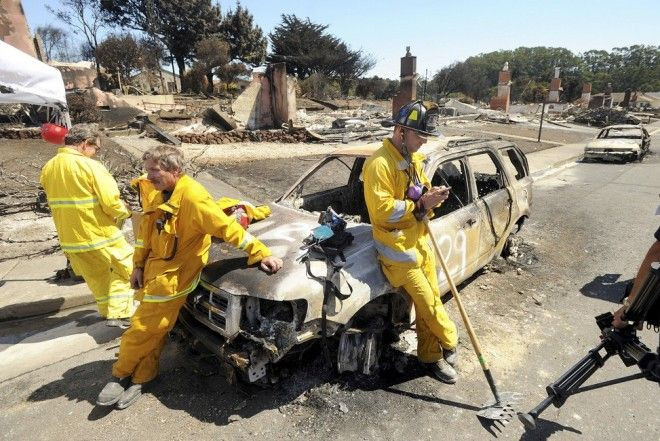Weld job may have weakened San Bruno pipeline

Investigators into the violent and deadly natural gas line explosion in San Bruno, California on Sept. 9, 2010, have discovered that certain pipe segments were welded only from the outside, not from both inside and outside the pipe, the National Transportation Safety Board said today.
The NTSB emphasized that today's report was only an update on the progress of the investigation into the incident in the San Francisco suburb that left eight people dead and destroyed or heavily damaged dozens of homes.
The agency did not attribute the explosion to how the pipe segments were welded and said, in its update release, that much more investigative work must be completed before the board would be in a position to determine the probable cause of the accident.
Nevertheless, the information gathered on the pipe segments is telling:
Investigators found that while the longitudinal seams on some of the pipe segments were fusion-welded from both inside and outside the pipe, some were fusion-welded only from the outside of the pipe, the report said.
In order to understand this variance, investigators are in the process of researching pipe welding standards and practices in effect at the time the pipeline was installed in 1956.
The report goes on to say that the outer surfaces of the ruptured pipe pieces revealed no evidence of external corrosion. No dents, gouges, or other physical indications consistent with excavation damage were observed. Additionally, no physical evidence suggests that a pre-existing leak occurred in the ruptured pipe pieces.
Congress has held hearings on the fatal accident and lawmakers have proposed updating safety measures regarding natural gas and oil pipelines.
Rick Kessler, vice president of the non-profit Pipeline Safety Trust, told a Senate subcommittee in late September that pipelines should be equipped with automatic or remote shut off valves to ensure a quick response in case of an explosion.
In 2010 it is unacceptable that the only way to shut off a large pipeline spewing fire into a populated neighborhood is to find someone with a key to a locked valve, have him or her drive to the valve and operate it manually, Kessler said. In good weather in San Bruno that method took an hour and a half to shut off the flow of fuel.
Kessler also noted that the pipeline had not been inspected by a smart pig - an inspection device resembling a large mechanical caterpillar - because the pipe was too old for that option. Parts of the pipeline were constructed and installed in 1948 and other parts in 1956.
More than 115 million cubic feet of natural gas were released in the explosion, according to the NTSB.
The crater created by the explosion was approximately 72 feet long by 26 feet wide and a pipe segment 28 feet long was blown about 100 feet away from the crater, the NTSB said.
Two separate bills have been introduced in the Senate to strengthen pipeline safety, one by Sen. Dianne Feinstein, D-CA, and another by Sens. Frank Lautenberg, D-NJ, and Jay Rockefeller, D-WV. Both are sitting in the Senate Committee on Commerce, Science and Transportation.
The NTSB expects to present its full report in about 9 months.
© Copyright IBTimes 2024. All rights reserved.





















